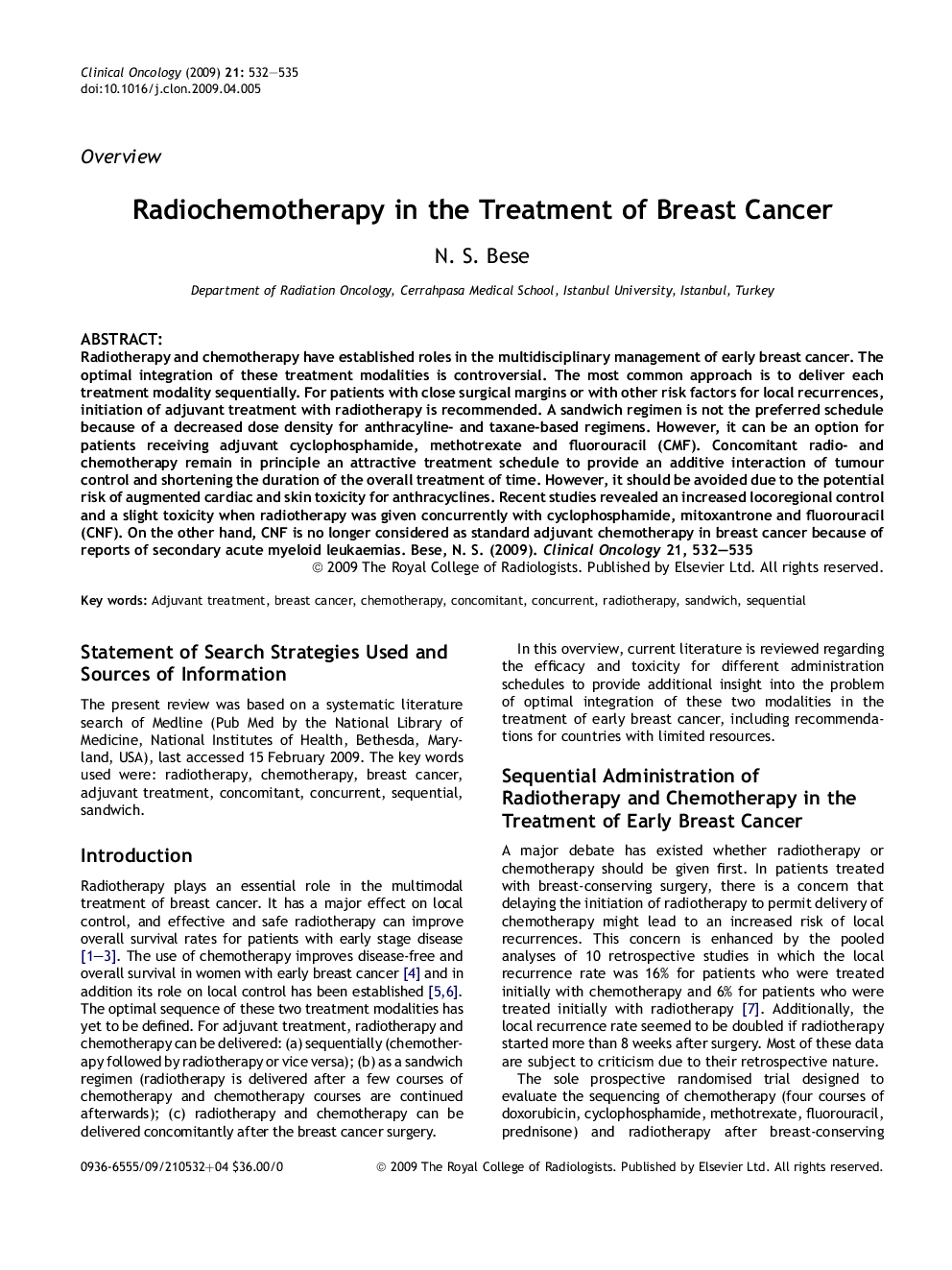| Article ID | Journal | Published Year | Pages | File Type |
|---|---|---|---|---|
| 5699220 | Clinical Oncology | 2009 | 4 Pages |
Abstract
Radiotherapy and chemotherapy have established roles in the multidisciplinary management of early breast cancer. The optimal integration of these treatment modalities is controversial. The most common approach is to deliver each treatment modality sequentially. For patients with close surgical margins or with other risk factors for local recurrences, initiation of adjuvant treatment with radiotherapy is recommended. A sandwich regimen is not the preferred schedule because of a decreased dose density for anthracyline- and taxane-based regimens. However, it can be an option for patients receiving adjuvant cyclophosphamide, methotrexate and fluorouracil (CMF). Concomitant radio- and chemotherapy remain in principle an attractive treatment schedule to provide an additive interaction of tumour control and shortening the duration of the overall treatment of time. However, it should be avoided due to the potential risk of augmented cardiac and skin toxicity for anthracyclines. Recent studies revealed an increased locoregional control and a slight toxicity when radiotherapy was given concurrently with cyclophosphamide, mitoxantrone and fluorouracil (CNF). On the other hand, CNF is no longer considered as standard adjuvant chemotherapy in breast cancer because of reports of secondary acute myeloid leukaemias.
Keywords
Related Topics
Health Sciences
Medicine and Dentistry
Oncology
Authors
N.S. Bese,
